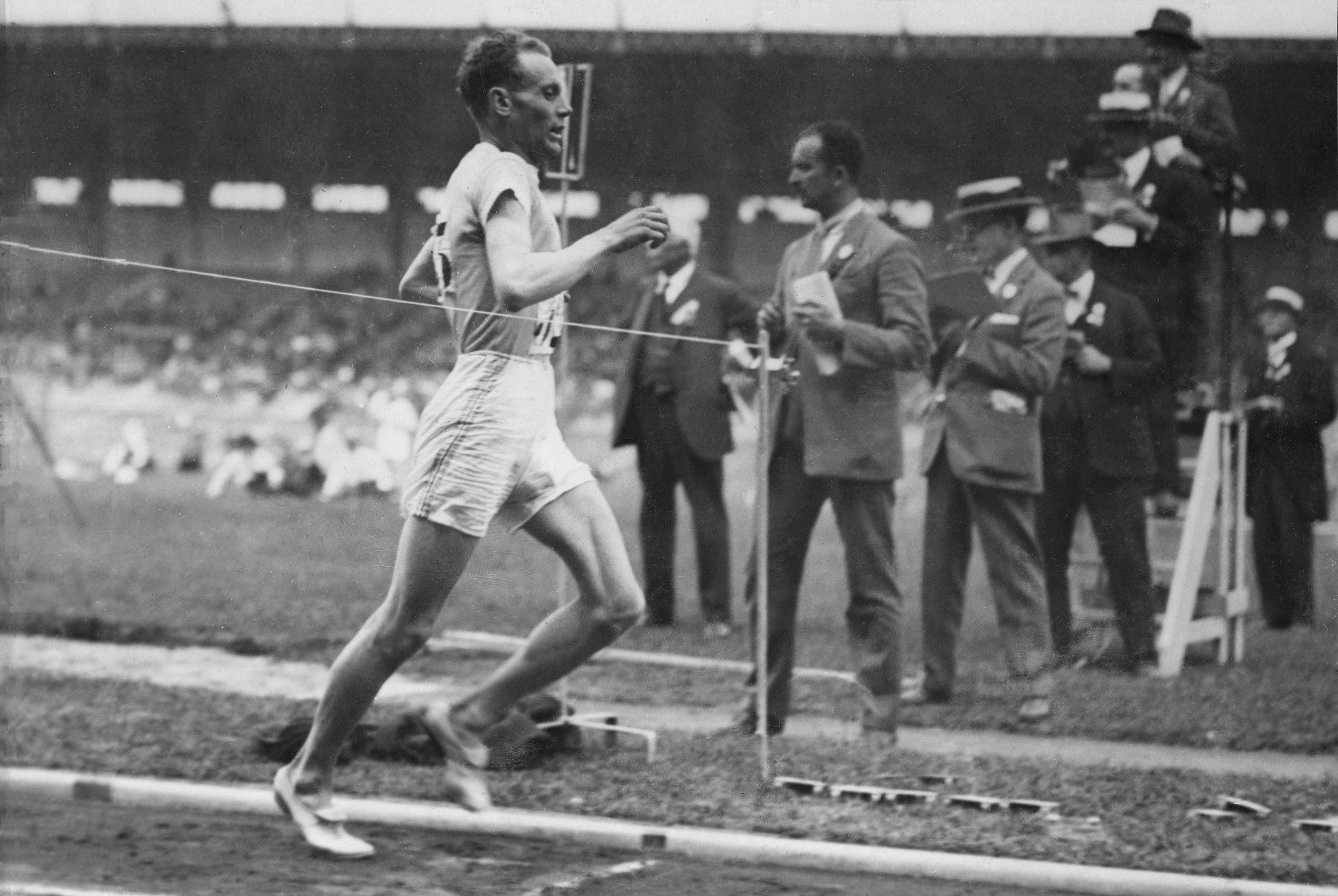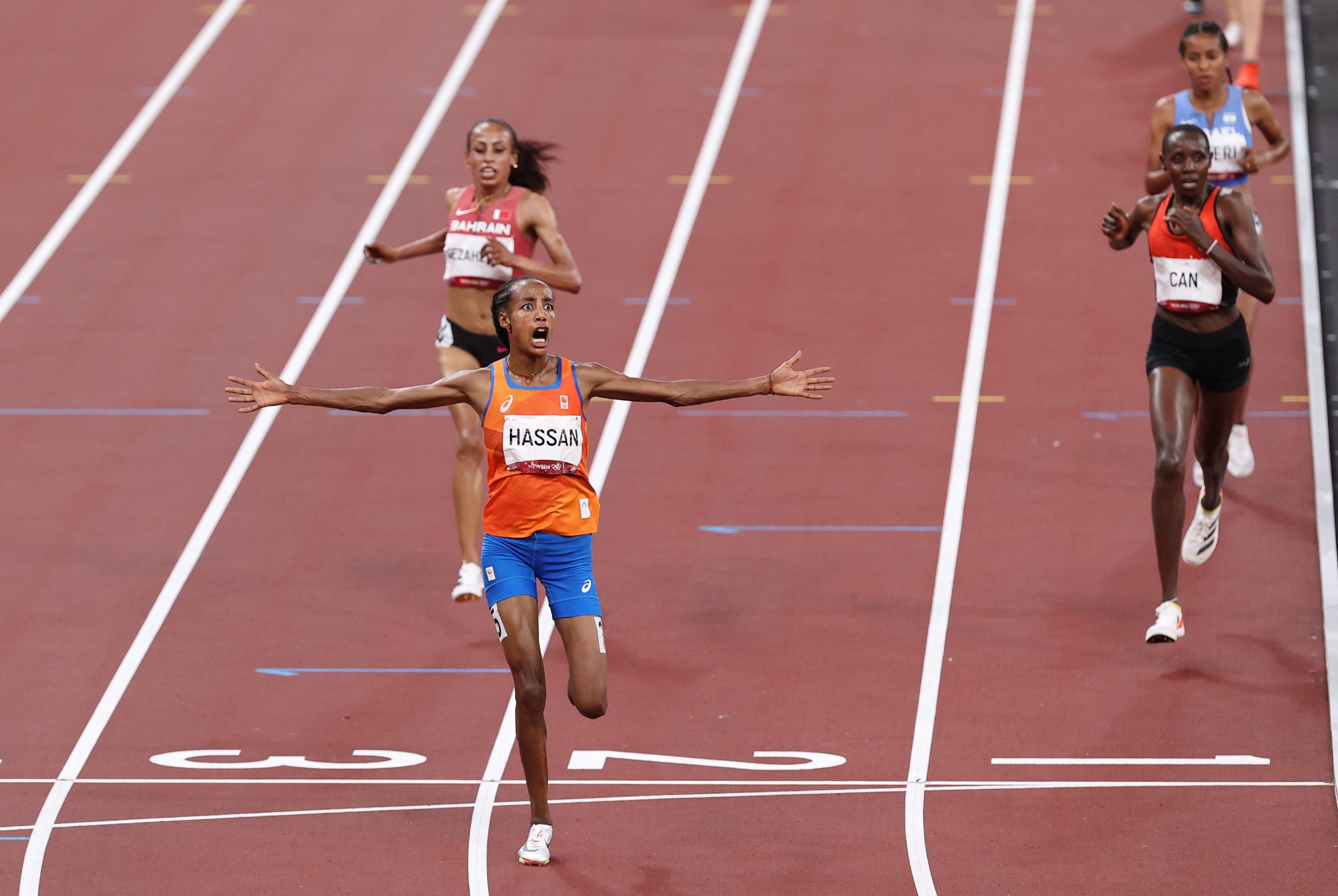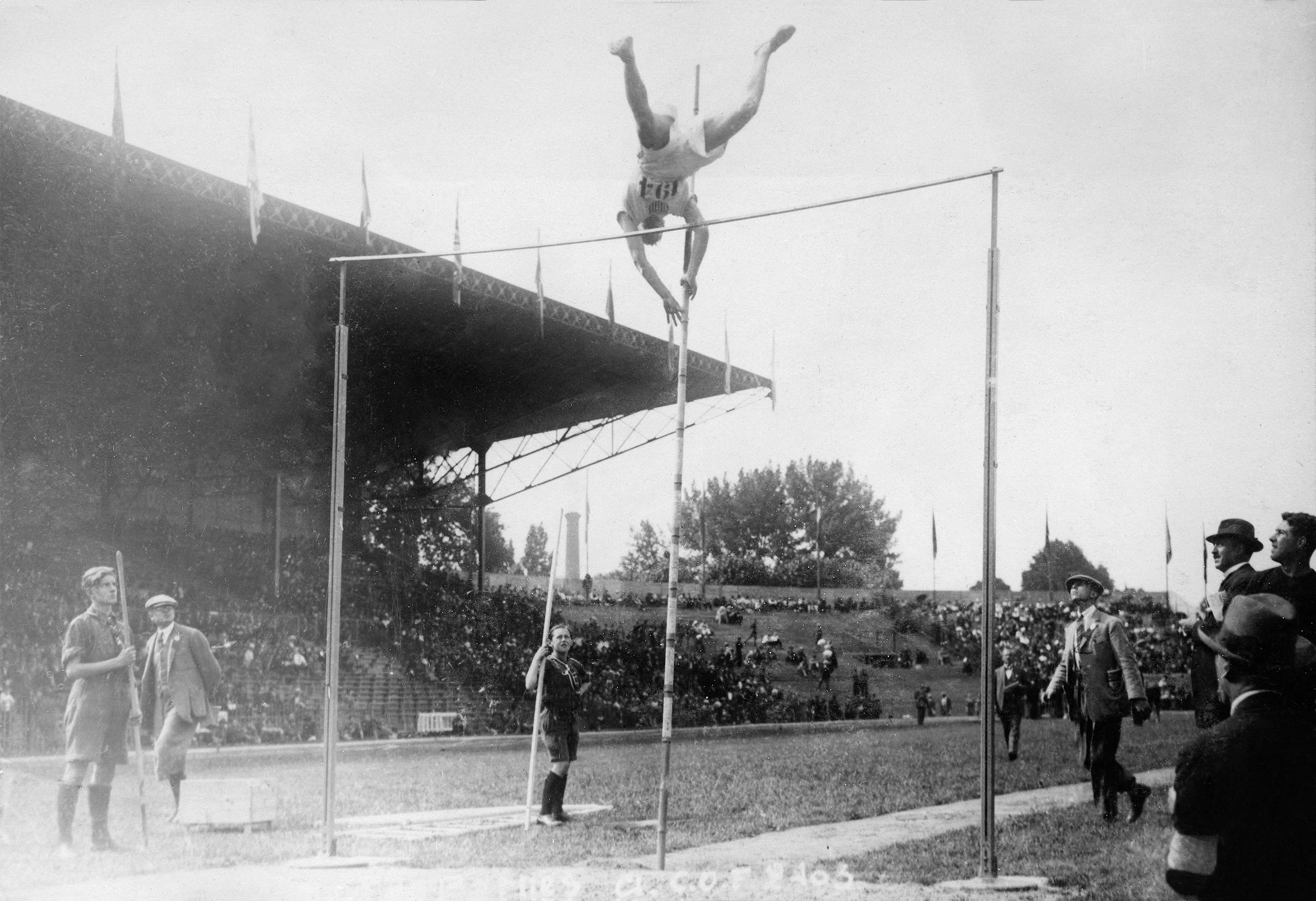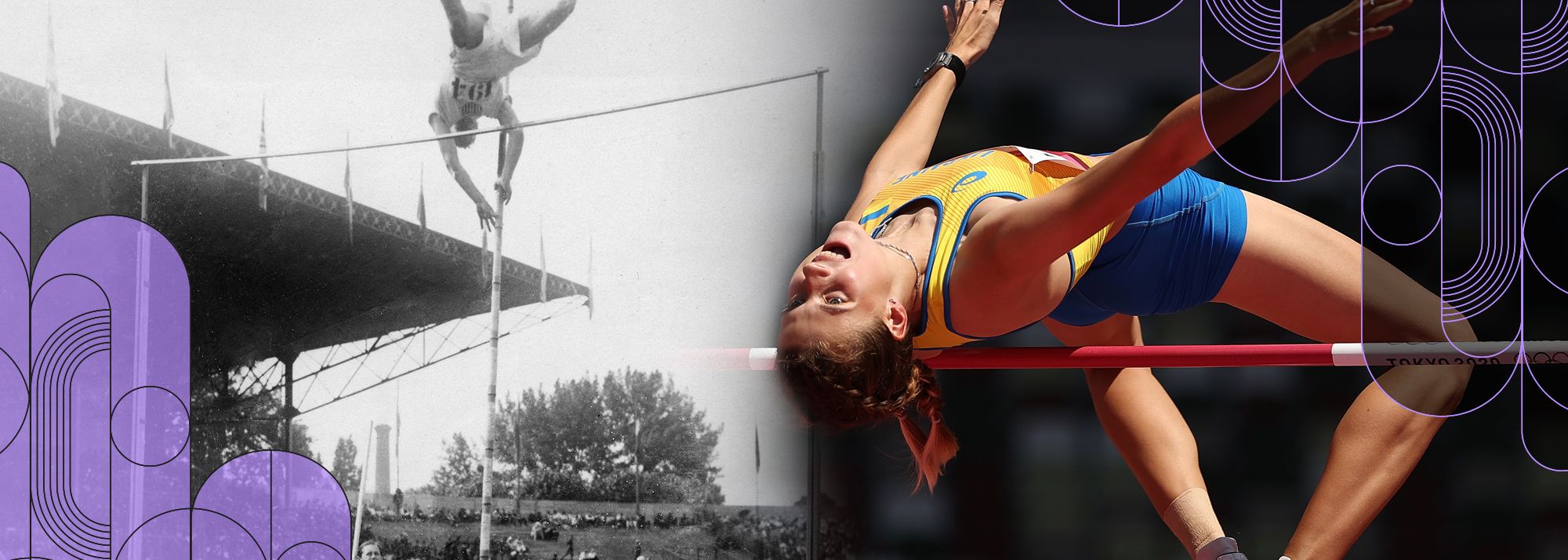1924 Olympic pole vault champion Lee Barnes and high jump world record-holder Yaroslava Mahuchikh (© AFP / Getty Images)
In just a few days’ time, Paris will host the Olympics for the third time, exactly 100 years after the French capital last staged the Games.
Much has happened in the sport over the past 10 decades, so in this mini series leading into this year’s Games, we’ll reflect on some of the bigger developments in athletics between 1924 and 2024, concluding with a look at some of the key figures.
--
A century after he was crowned the five-time king of the 1924 Olympics in Paris, Paavo Nurmi remains the all-time greatest track and field performer in the history of the Games.
It was stunning enough that the enigma known as ‘The Phantom Finn’ ghosted to victories just 55 minutes apart in the finals of the 1500m and 5000m in the French capital, having prepared for the monumental challenge by setting world records within an hour at both distances in Helsinki a month previously.

Time keepers at the finish line as Paavo Nurmi competes at the 1924 Olympic Games (© AFP / Getty Images)
But Nurmi proceeded to take individual and team gold medals from the brutal 10km cross country race two days later, from which 23 of the 38 starters failed to finish. Several were left hospitalised after battling against temperatures of 45°C and noxious fumes from an industrial chimney.
The day after that, ‘Peerless Paavo’ led Finland to victory in the 3000m team race to finish with five gold medals from one Olympic Games – still a record haul 100 years later. He won nine Olympic titles in all, having prevailed in the 10,000m and individual and team cross country in Antwerp in 1920, and gone on to regain the 10,000m crown from his compatriot and rival Ville Ritola in Amsterdam in 1928. Ritola claimed a record six medals in Paris, four of them golds.
• Explore more of the sport's history in the Museum of World Athletics
A hundred years on from the 1924 Paris Games, it would be fitting if Nurmi’s golden 1500m-5000m double were to be emulated by a woman at the Paris 2024 Olympic Games.
Women were deemed too frail for Olympic track and field competition in 1924; they first entered the Games in Amsterdam four years later. A century on, Faith Kipyegon stands capable of emerging victorious from both the 1500m and 5000m in the French capital, albeit with a gap of five days.
The Kenyan phenomenon achieved the feat at last year’s World Athletics Championships in Budapest. Already one of only three athletes who have won back-to-back Olympic 1500m titles, after Tatyana Kazankina and Sebastian Coe, Kipyegon lowered her 1500m world record to 3:49.04 at the Paris Diamond League meeting on 7 July. Nurmi’s winning time in 1924 was 3:53.6.
Comparisons have also been drawn between Nurmi and Sifan Hassan, the Dutch star who claimed three medals – golds in the 5000m and 10,000m plus bronze in the 1500m – at the Tokyo Olympics. She had previously achieved a 1500m-10,000m title double at the 2019 World Championships in Doha and won medals in the 1500m and 5000m at last year’s World Championships, sandwiched between marathon wins in London in April and Chicago in October.

Sifan Hassan wins the 10,000m at the Tokyo 2020 Olympic Games (© Getty Images)
While yet to confirm which events she will contest in Paris, Hassan is entered for four disciplines: the 1500m, 5000m, 10,000m and marathon.
Like Kipyegon, Ukraine’s Yaroslava Mahuchikh set a world record at the Paris Diamond League meeting earlier this month. Clearing 2.10m, she improved the women’s high jump world record by one centimetre. It took Harold Osborn of the US 1.98m to win men’s gold in the same event in Paris in 1924.
Sweden’s Mondo Duplantis also heads to Paris in world record shape, having pole vaulted 6.24m at the opening Diamond League fixture of the season in Xiamen in April.
Lee Barnes, a 17-year-old student from Hollywood High School, won the 1924 title with a clearance of 3.95m. He later became a stunt double for the Hollywood silent movie star Buster Keaton.

Lee Barnes in the pole vault at the 1924 Olympic Games (© AFP / Getty Images)
Also in 1924, USA's William DeHart Hubbard became the first black athlete to claim an Olympic gold medal in an individual event when he won the long jump.
Britons Harold Abrahams and Eric Liddell, winners of the 100m and 400m respectively, were immortalised in the Oscar-winning film Chariots of Fire. When the 100m final was scheduled for a Sunday, Liddell switched from his specialist event to the 400m because of his Christian conviction to keep the Sabbath as a day of worship.
Simon Turnbull for World Athletics




